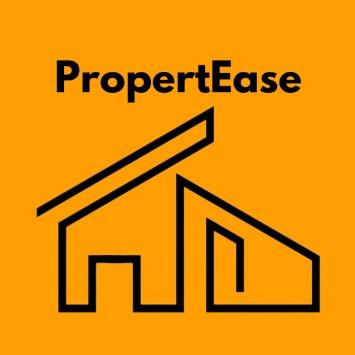PropertEase
Step into your dream sanctuary! Immerse in a virtual tour, uncover insights into your future haven, including anticipated property value trends. Hurry, the gateway to your dream home awaits! 🚪🌟
Created on 27th January 2024
•
PropertEase
Step into your dream sanctuary! Immerse in a virtual tour, uncover insights into your future haven, including anticipated property value trends. Hurry, the gateway to your dream home awaits! 🚪🌟
The problem PropertEase solves
The real estate industry's complexity and lack of transparency often leave property buyers and sellers struggling to access accurate and up-to-date information. Moreover, the dominance of a few major companies further limits options for users, and the term "premium" seems unjust, as it often entails significant expenses merely to contact others in the market.
To address these challenges, we propose the development of a user-friendly and comprehensive property dealing app "PropertEase". This solution aims to:
1)Reduce Complexity and Increase Transparency:
Display all necessary property details, including pricing, legal aspects, and authenticity, to streamline the decision-making process.
2)Enhance Connectivity Between Buyers and Sellers:
Facilitate direct communication between buyers and sellers to ensure transparency and foster trust.
3)Regular Updates and Comprehensive Coverage:
Provide regular updates on new properties across various regions and types, ensuring users have access to a wide range of options.
4)Efficient Deal Process:
Pre-screen and verify property details to reduce deal time and provide relevant information tailored to user preferences.
5)Offer Alternatives at Reasonable Prices:
Present alternative options with comparable quality but at more reasonable prices, broadening choices for users.
6)Flexible Premium Features:
Introduce a premium tier with additional features for users seeking enhanced reliability and convenience, offering these features on an as-needed basis.
7)Eliminate Middlemen:
Establish a direct channel for buying and selling transactions, bypassing intermediaries to expedite deals and minimize costs.
By implementing these features, the proposed app aims to revolutionize the property dealing experience, making it more accessible, transparent, and efficient for both buyers.
Challenges we ran into
Major challenges we faced during this project includes:
1)Data Quality and Preprocessing:
*Sophisticated preprocessing techniques addressed missing data, outliers, and inconsistencies.
*Robust imputation strategies and anomaly detection algorithms enhanced data quality.
2)Market Volatility:
*Advanced time series forecasting models, augmented by feature engineering, tackled market fluctuations.
*Dynamic regression frameworks integrated exogenous factors to bolster predictive accuracy.
3)Economic Conditions:
*Integration of economic indicators like interest rates required nuanced econometric methodologies.
*Model validation and tuning ensured predictive efficacy of economic time series models.
4)Limited Historical Data:
*Transfer learning and data augmentation techniques enriched datasets for regions with sparse historical data.
*Ensemble modeling approaches amalgamated disparate data sources to enhance predictive performance.
5)Dynamic Demographics:
*Bayesian hierarchical modeling and spatio-temporal frameworks incorporated demographic insights into predictive inference.
*Collaborative efforts with domain experts contextualized demographic trends within the real estate landscape.
6)Augmented Reality Integration:
*Refinement of ray casting algorithms and occlusion-aware rendering strategies improved AR object positioning accuracy.
*Sensor fusion methodologies enhanced positional tracking in challenging environmental conditions.
7)Application Integration:
*Modular design principles facilitated seamless integration of diverse application functionalities.
*Containerization technologies and CI/CD pipelines streamlined deployment workflows and ensured application integrity.
Tracks Applied (2)
